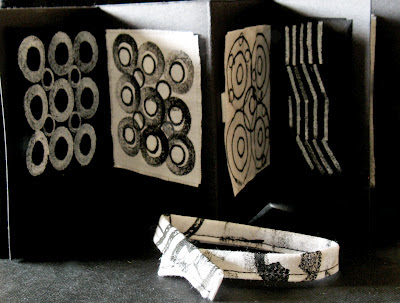Yesterday I had a day out in London with a friend; we visited the Contemporary Applied Art Gallery in Percy Street. We visited particularly too see the 50/50 exhibition by Matthew Harris and Cleo Mussi. I have admired images of Matthew Hariss’ textile work for a long time and it was interesting to see it in reality and to see the paper cartoons which he worked prior to the textile pieces Also on display were the sources of inspiration for their work which focused on items collected during their trips to Japan. I had not expected to like the mosaic work as I think it has in general a bad image, but it was fascinating and could I have afforded one of her reclaimed plates I would certainly being admiring it on my desk now.
We then went on a trek involving two buses to a related exhibition at Circus. CAA have an arrangement to use a display area in an office building, it was worth the effort to see three pieces of Louise Baldwins’ work. Next door was the Conran shop where we oowed and swooned at the furniture and beautifully displayed items. They had used old books stripped of their covers piled up as display items - if I had the space I could do the same as I do have piles of old books!
I also took some of my work to City Lit. for their textile exhibition which will be from April 23rd to 7th May; so if you are in London do go and have a look.
For Morna here is some information about Cocoon Strippings, they are very cheap and very useful.

































